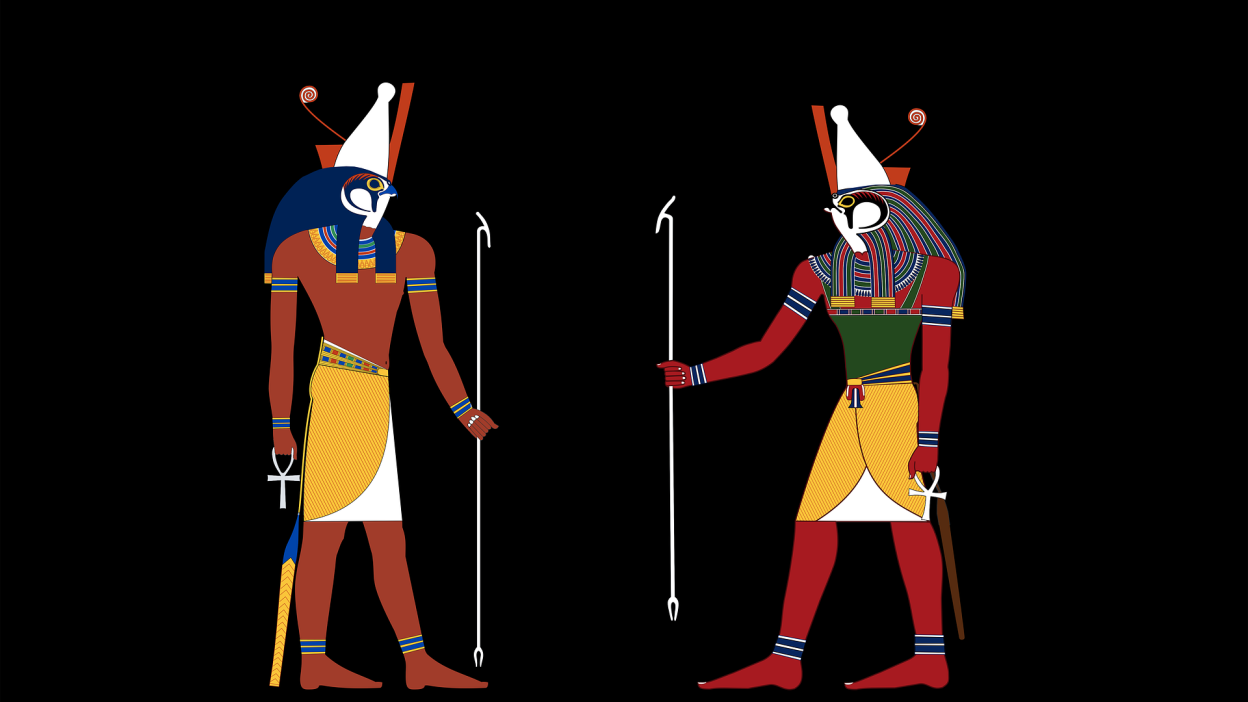A Devotion To The Afterlife Or A Brutal Mass Execution?
Ancient Egypt is often remembered for its extraordinary pyramids, intricate burial rituals, and religious devotion, but hidden within this grandeur lies a dark and chilling reality—the practice of retainer sacrifice. This ritual, conducted primarily during the First Dynasty (c. 3100–2900 BCE), involved the killing of servants, concubines, guards, and officials to be buried alongside their ruler. The reason? To ensure they could continue their service in the afterlife.
But was this truly an honourable tradition, or was it simply a brutal form of execution dressed up as religious duty? Were retainers willing participants, or were they victims of Pharaohs’ unchecked power? Let’s dive into this eerie chapter of Egyptian history and uncover the gruesome truth behind this ancient ritual.
1. Buried Alive for the Afterlife: The Grim Practice of Retainer Sacrifice
Egyptians strongly believed in life after death, where the deceased would continue their existence much like they had in the physical world. This belief led to elaborate burial customs, including mummification, tomb paintings, and funerary goods. However, some rulers went even further—they took their living servants, guards, and companions with them.
Retainer sacrifices were conducted for powerful figures, especially Pharaohs, to ensure that their royal courts, personal staff, and protectors would accompany them into the afterlife. These individuals were often young and healthy, signifying that their deaths were not from natural causes but were deliberate and ritualistic.
Archaeologists have discovered mass graves surrounding the tombs of early Pharaohs, containing the remains of hundreds of retainers, carefully arranged according to their roles. Their deaths were not random—they followed a strict hierarchical order, just as they had served in life. This raises a disturbing question: Did these individuals accept their fate, or were they unwilling victims of a gruesome tradition?
2. Who Was Chosen for the Ultimate Sacrifice?
Not every Egyptian servant was destined for retainer sacrifice. The selection process was based on rank, duty, and the deceased ruler’s needs in the afterlife. The following groups were among those most commonly chosen:
- Personal Attendants & Servants – Pharaohs took their loyal attendants, cupbearers, barbers, and body slaves to ensure their comfort in the afterlife.
- Royal Guards & Soldiers – Warriors were sacrificed to serve as protectors beyond death, defending their ruler from any spiritual threats.
- Concubines & Wives – Some Pharaohs insisted that their wives and concubines be buried with them, reinforcing their status even in the afterlife.
- Advisors & Officials – High-ranking scribes, priests, and courtiers were selected to continue their administrative roles.
This system ensured that the Pharaoh’s worldly power and influence extended beyond the grave. However, the horrifying reality is that many of these individuals were likely given no choice—their fate was sealed the moment their master died.
3. The Shocking Death Toll: How Many Were Sacrificed?
The practice of retainer sacrifice wasn’t an isolated ritual—it occurred at multiple royal burials. The number of retainers killed at each burial site demonstrates the massive scale of this tradition:
- Tomb of King Djer (c. 3050 BCE)
- Over 300 retainers were sacrificed and buried alongside the Pharaoh.
- Many remains show signs of strangulation and blunt force trauma.
- Burial Site of Queen Merneith (c. 2950 BCE)
- More than 40 retainers, including royal guards and servants, were killed.
- Evidence suggests some were bound and buried alive.
- Tomb of King Qa’a (c. 2900 BCE)
- Nearly 30 high-ranking officials and attendants were sacrificed.
- Their placement reflected the strict court hierarchy.
- Decline of the Practice (c. 2700 BCE onwards)
- The number of sacrifices began to drop significantly.
- Retainers were gradually replaced with ushabti figurines—small statues meant to symbolically serve the deceased instead of real humans.
These discoveries highlight the sheer scale of human sacrifice, with hundreds of retainers perishing to uphold Pharaohs’ belief in absolute power.
4. A Choice or a Command? The Psychological Grip of Retainer Sacrifice
Was retainer sacrifice an act of devotion or a forced execution? Historians remain divided on whether retainers willingly accepted their fate or were compelled through fear and coercion.
Some believe that ancient Egyptians, deeply religious and loyal, embraced death as an honour, convinced they would continue serving in a glorious afterlife. However, evidence suggests a more sinister truth—many retainers may have dreaded their fate but had no way to escape it.
The presence of bound hands, execution wounds, and violent trauma on skeletons indicates that not all retainers went willingly. Fear of disobeying the Pharaoh, coupled with the deeply ingrained belief in divine punishment, may have left them no choice but to comply.
5. The Brutal Execution Methods Used in Retainer Sacrifice
Archaeological evidence suggests that retainers met their end through several gruesome methods:
- Strangulation – Many skeletons show signs of suffocation, possibly to ensure a “peaceful” death.
- Blunt Force Trauma – Some retainers had crushed skulls and broken bones, indicating violent execution.
- Poisoning – Some scholars believe that retainers were given a lethal drink, disguised as a potion for the afterlife.
These killings were highly ritualistic, ensuring that retainers died in a specific, ceremonial manner rather than randomly.
6. The Social Status of the Sacrificed Retainers
The individuals selected for retainer sacrifice were not peasants or criminals but belonged to the upper ranks of society:
- Personal attendants and handmaidens who directly served the Pharaoh.
- Elite soldiers and guards, handpicked for their strength and loyalty.
- Concubines and wives, chosen to accompany their ruler in eternity.
- Royal officials and high-ranking advisors, ensuring the Pharaoh’s rule continued.
Their young age and good physical condition prove that they were deliberately sacrificed rather than dying of natural causes.
7. Why Did Retainer Sacrifices Suddenly Stop?
Over time, the practice of retainer sacrifice declined due to several key factors:
- Religious Evolution – The rise of ushabti figurines allowed Pharaohs to replace real servants with symbolic statues.
- Economic Burden – The loss of so many young and capable individuals weakened Egypt’s workforce.
- Moral and Social Shifts – Changing beliefs made human sacrifice less acceptable.
By the Middle Kingdom (c. 2050 BCE), retainer sacrifice had all but disappeared.
8. Archaeological Findings: What Do the Tombs Reveal?
Excavations have uncovered chilling evidence of these rituals:
- Large burial sites containing sacrificed retainers.
- Skeletons showing signs of execution, restraint, and trauma.
- Hierarchical grave placements reflecting their status in life.
These findings confirm that human sacrifice was an established, state-sanctioned practice in early Egypt.
9. The Ethical Debate: Was This an Honour or an Atrocity?
As time passed, later Egyptians may have viewed the practice as barbaric, leading to its decline. Today, it remains one of the most controversial aspects of ancient Egyptian civilisation.
This practice forces us to confront difficult ethical questions—how far should devotion go? And is blind loyalty ever justified?
10. A Lesson from the Past: What Can Modern Society Learn?
Though retainer sacrifice is long gone, ritual killings and forced devotion still exist in some societies. Ancient Egypt’s dark history serves as a powerful reminder of the dangers of absolute power and unquestioning obedience.
5 Short FAQs
1. What was the purpose of retainer sacrifice?
To ensure Pharaohs had servants in the afterlife by killing and burying them alongside their tombs.
2. How were retainers executed?
Methods included strangulation, blunt force trauma, and poisoning.
3. When did the practice stop?
It declined around 2700 BCE and was fully replaced by ushabti figurines.
4. Were retainers willing to die?
Some may have believed in the afterlife, but many were likely forced.5. Are there modern parallels?
While rare, ritual sacrifices and extreme loyalty practices still occur in some cultures.




